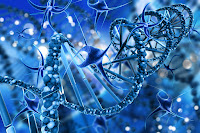DNA Sequencing and it's Application in mordern day
Table of Contents
What is DNA?
Deoxyribonucleic acid (DNA) is a bio molecule with the characteristics of self-replicating, mutable, regulate of all biological function and carrier of hereditary information of a living cell.
What is DNA sequencing?
DNA sequencing is the process of determining the precise order of the nucleotides (building blocks) that make up a DNA molecule. DNA is made up of four nucleotides: adenine (A), thymine (T), cytosine (C), and guanine (G). By determining the order of these nucleotides, scientists can read the genetic code of an organism.
The first DNA sequencing methods were developed in the 1970s and 1980s. These methods were slow, expensive, and labor-intensive, requiring weeks or months to sequence just a few hundred base pairs of DNA. However, advances in technology and computational power have made DNA sequencing faster, cheaper, and more accurate. Today, it is possible to sequence entire genomes in a matter of hours or days.
Pic: DNA Sequencing, Image Credit: Freepik.How is DNA sequencing done?
There are several methods of DNA sequencing, but they all involve breaking the DNA molecule into small fragments, sequencing each fragment, and then reassembling the fragments into a complete sequence.Methods includes:
Shotgun sequencing:
The most common method of DNA sequencing is called "shotgun sequencing." In this method, the DNA is randomly broken into small fragments, which are then sequenced using high-throughput sequencing machines. The resulting sequences are then assembled into a complete genome using sophisticated computer algorithms.
Sanger sequencing Method:
Another method of DNA sequencing is called "Sanger sequencing." This method involves replicating the DNA molecule many times, using special chemical reactions that incorporate small pieces of labeled DNA into the growing chain. By sequencing these labeled fragments, scientists can determine the sequence of the original DNA molecule. Sanger sequencing is slower and more expensive than shotgun sequencing, but it is still used in some applications where high accuracy is required.
Application Of DNA sequencing
DNA sequencing has many applications in biology, medicine, and industry. Here are some examples:
Understanding genetic diseases:
DNA sequencing has revolutionized our understanding of genetic diseases. By sequencing the genomes of patients with genetic disorders, scientists can identify the specific mutations that cause the disease. This information can be used to develop new treatments and therapies.
Studying evolution:
DNA sequencing has allowed scientists to study the evolution of living things in unprecedented detail. By comparing the genomes of different species, scientists can reconstruct the evolutionary relationships between them and trace the history of life on Earth.
Developing new drugs:
DNA sequencing has led to the development of new drugs and therapies. By sequencing the genomes of disease-causing organisms, scientists can identify new drug targets and develop drugs that specifically target those targets.
Improving agriculture:
DNA sequencing can be used to improve crop yields and reduce the need for pesticides. By sequencing the genomes of crops, scientists can identify genes that are responsible for desirable traits, such as drought resistance or pest resistance. This information can be used to develop new varieties of crops that are better adapted to local conditions.
Conclusion
DNA sequencing is a powerful technology that has transformed our understanding of biology, medicine, and industry. By allowing us to read the genetic code of organisms, we can better understand how living things work, how they evolve, and how they can be manipulated for human benefit. As the technology continues to improve, it is likely that DNA sequencing.





0 Comments